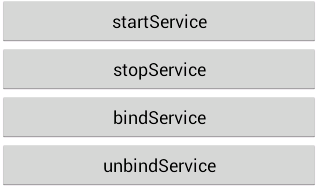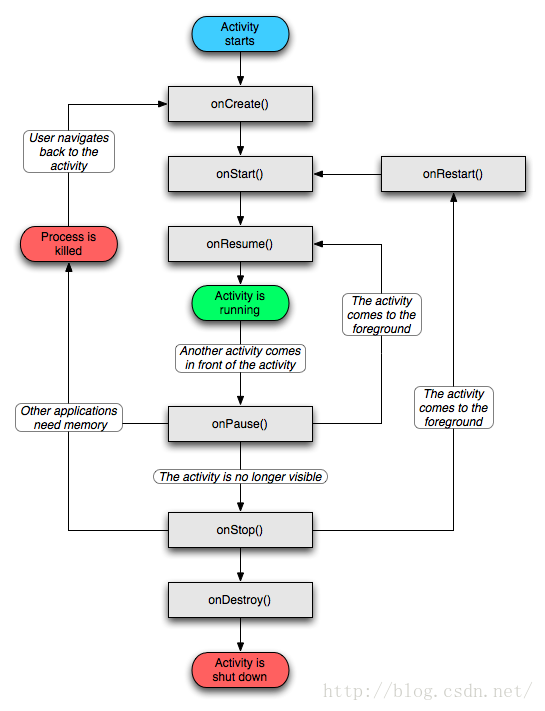凡是真正分析過bluez代碼或者debug過相關bug的童鞋,一定對hciops非常熟悉吧,是的,它是各個event的處理中心,承接著controller到上層host的各個方面的交互,本文就來詳細分析一下它的初始化過程。
2.3.5.2 add_plugin分析
add_plugin只是單純地把plugin加入到系統裡面,或者就是plugin的初始化,來看看吧
[cpp]
static gboolean add_plugin(void *handle, struct bluetooth_plugin_desc *desc)
{
struct bluetooth_plugin *plugin;
//檢查是否有init函數,沒有直接返回
if (desc->init == NULL)
return FALSE;
//檢查一下version是不是匹配,那邊初始化的時候就是用的VERSION,所以,沒有問題
if (g_str_equal(desc->version, VERSION) == FALSE) {
error("Version mismatch for %s", desc->name);
return FALSE;
}
DBG("Loading %s plugin", desc->name);
//初始化bluetooth_plugin結構體
plugin = g_try_new0(struct bluetooth_plugin, 1);
if (plugin == NULL)
return FALSE;
plugin->handle = handle;
plugin->active = FALSE;
plugin->desc = desc;
//按照priority來加入到plugins list中
plugins = g_slist_insert_sorted(plugins, plugin, compare_priority);
return TRUE;
}
2.3.5.3 hciops的init函數分析
初略一看,hciops的init函數還是蠻簡單的,就是一句話:
[cpp]
static int hciops_init(void)
{
DBG("");
//這個我們比較熟悉,就是把hci_ops注冊進來呗
//這裡我們詳細分析一下,究竟做了些什麼
return btd_register_adapter_ops(&hci_ops, FALSE);
}
[cpp]
int btd_register_adapter_ops(struct btd_adapter_ops *ops, gboolean priority)
{
//其實就是判斷setup函數是否存在,具體的帶用會在後面的adapter_ops_setup中
if (ops->setup == NULL)
return -EINVAL;
//根據priority,決定吧ops加入到ops_candidates的頭還是尾中,這個還是蠻簡單的吧
if (priority)
ops_candidates = g_slist_prepend(ops_candidates, ops);
else
ops_candidates = g_slist_append(ops_candidates, ops);
return 0;
}
2.3.6 adapter_ops_setup的分析
其實這個函數很簡單,就是setuphciops,我們來分析一下
[cpp]
int adapter_ops_setup(void)
{
GSList *l;
int ret;
//ops_candidates是在hciops的init函數中加入的
if (!ops_candidates)
return -EINVAL;
//這裡也沒有別的,就只有hciops,調用他的setup即可
for (l = ops_candidates; l != NULL; l = g_slist_next(l)) {
struct btd_adapter_ops *ops = l->data;
//Setup見下面的分析
ret = ops->setup();
if (ret < 0)
continue;
//同時需要把這個ops和adapter_ops相關聯
adapter_ops = ops;
break;
}
return ret;
}
hciops的setup函數也是在對應的ops中定義的,我們去看一下:
[cpp]
static int hciops_setup(void)
{
struct sockaddr_hci addr;
struct hci_filter flt;
GIOChannel *ctl_io, *child_io;
int sock, err;
DBG("");
//先判斷一下有沒有pipe過
if (child_pipe[0] != -1)
return -EALREADY;
//創建一個管道,child_pipe[0]為讀入端,child_pipe[1]為寫入端
if (pipe(child_pipe) < 0) {
err = -errno;
error("pipe(): %s (%d)", strerror(-err), -err);
return err;
}
//一個io channel進行監聽,若是有數據,就會去讀了
child_io = g_io_channel_unix_new(child_pipe[0]);
g_io_channel_set_close_on_unref(child_io, TRUE);
child_io_id = g_io_add_watch(child_io,
G_IO_IN | G_IO_ERR | G_IO_HUP | G_IO_NVAL,
child_exit, NULL);
g_io_channel_unref(child_io);
//創建並且bind hci socket
/* Create and bind HCI socket */
sock = socket(AF_BLUETOOTH, SOCK_RAW, BTPROTO_HCI);
if (sock < 0) {
err = -errno;
error("Can't open HCI socket: %s (%d)", strerror(-err),
-err);
return err;
}
/* Set filter */
//這裡只關注bluez stack的internal的event,這個就是DEV_REG,DEV_UP之類的event的處理了
hci_filter_clear(&flt);
hci_filter_set_ptype(HCI_EVENT_PKT, &flt);
hci_filter_set_event(EVT_STACK_INTERNAL, &flt);
if (setsockopt(sock, SOL_HCI, HCI_FILTER, &flt, sizeof(flt)) < 0) {
err = -errno;
error("Can't set filter: %s (%d)", strerror(-err), -err);
return err;
}
memset(&addr, 0, sizeof(addr));
addr.hci_family = AF_BLUETOOTH;
addr.hci_dev = HCI_DEV_NONE;
//bind
if (bind(sock, (struct sockaddr *) &addr, sizeof(addr)) < 0) {
err = -errno;
error("Can't bind HCI socket: %s (%d)", strerror(-err), -err);
return err;
}
//再建一個io channel來監聽它
ctl_io = g_io_channel_unix_new(sock);
g_io_channel_set_close_on_unref(ctl_io, TRUE);
//回調函數是io stack event,等用到的時候再具體分析好了,詳細分析見2.3
ctl_io_id = g_io_add_watch(ctl_io, G_IO_IN, io_stack_event, NULL);
g_io_channel_unref(ctl_io);
//這裡設置了一個空閒任務,就是空閒的時候,我們會執行init_known_adapters函數,從這裡可以看出這個函數的優先級必然不高,但是他仍然會執行,所以,我們可以去看一下
g_idle_add(init_known_adapters, GINT_TO_POINTER(sock));
return 0;
}
空閒的時候執行函數:init_known_adapters的分析
[cpp]
static gboolean init_known_adapters(gpointer user_data)
{
struct hci_dev_list_req *dl;
struct hci_dev_req *dr;
int i, err, ctl = GPOINTER_TO_INT(user_data);
size_t req_size;
DBG("");
req_size = HCI_MAX_DEV * sizeof(struct hci_dev_req) + sizeof(uint16_t);
//申請devcie list空間
dl = g_try_malloc0(req_size);
if (!dl) {
error("Can't allocate devlist buffer");
return FALSE;
}
//最多16個設備
dl->dev_num = HCI_MAX_DEV;
dr = dl->dev_req;
//通過ioctl得到device 的列表
if (ioctl(ctl, HCIGETDEVLIST, dl) < 0) {
err = -errno;
error("Can't get device list: %s (%d)", strerror(-err), -err);
g_free(dl);
return FALSE;
}
for (i = 0; i < dl->dev_num; i++, dr++) {
struct dev_info *dev;
gboolean already_up;
//這裡檢查是否up,bluetootd初始化的時候應該已經up了
already_up = hci_test_bit(HCI_UP, &dr->dev_opt);
//初始化device,這個在2.3.1中進行詳細分析
dev = init_device(dr->dev_id, already_up);
if (dev == NULL)
continue;
if (!dev->already_up)
continue;
init_conn_list(dr->dev_id);
dev->pending = 0;
//設置pending version位
hci_set_bit(PENDING_VERSION, &dev->pending);
//發送read local version的cmd
hci_send_cmd(dev->sk, OGF_INFO_PARAM,
OCF_READ_LOCAL_VERSION, 0, NULL);
//同時發送HCI_DEV_UP的event,這個在2.3.2中分析
device_event(HCI_DEV_UP, dr->dev_id);
}
g_free(dl);
return FALSE;
}
 基於Android Service 生命周期的詳細介紹
基於Android Service 生命周期的詳細介紹
 Android中Activity生命周期和啟動模式詳解
Android中Activity生命周期和啟動模式詳解
 千裡之外,你也能用手機遠程控制PC!
千裡之外,你也能用手機遠程控制PC!
 Android 解決build path errors的問題
Android 解決build path errors的問題